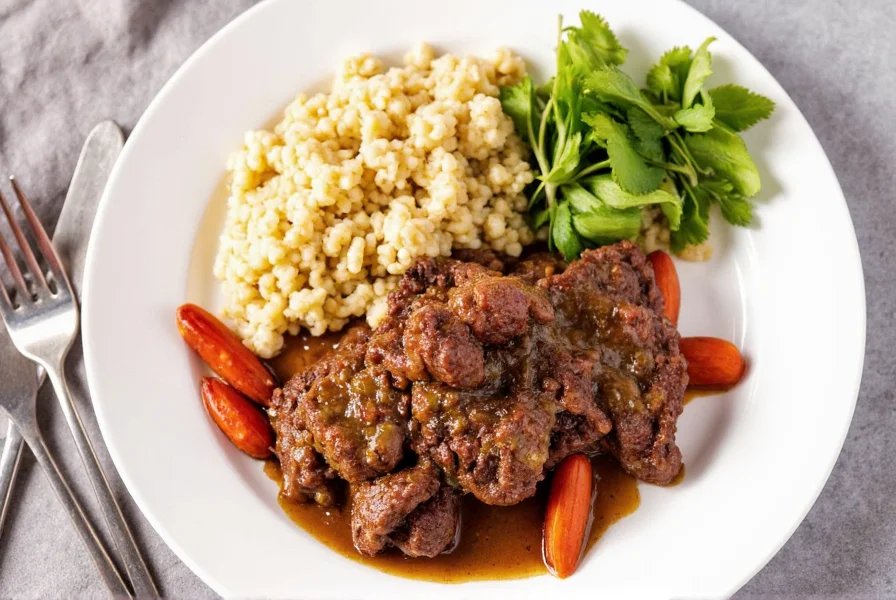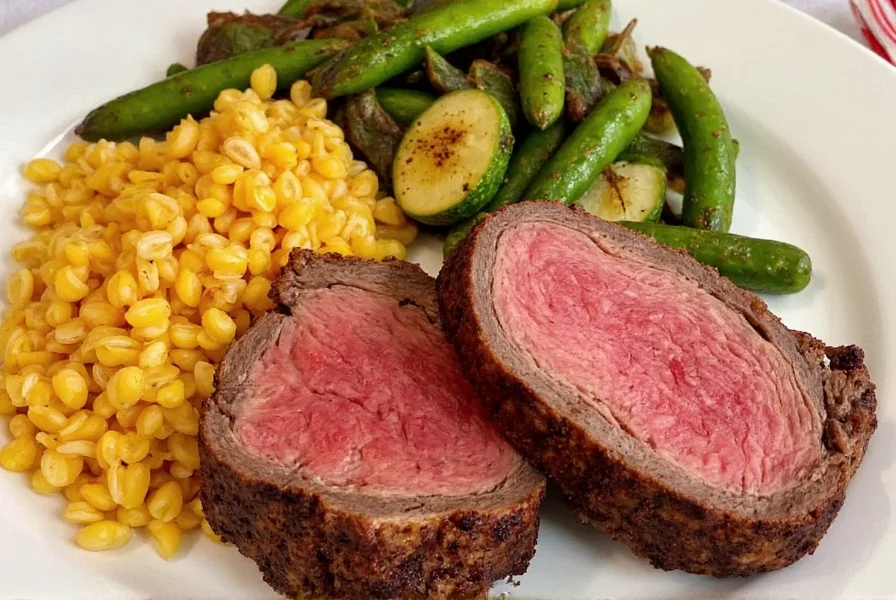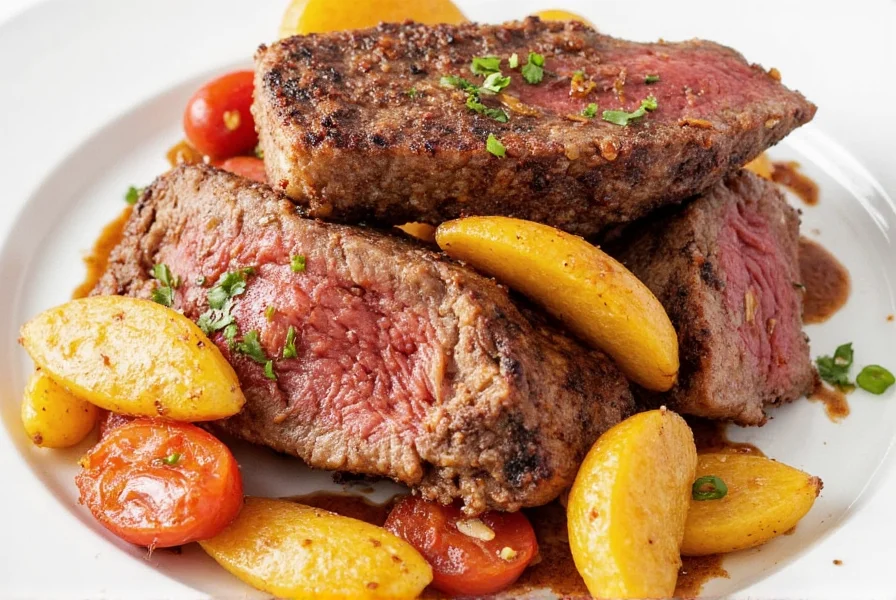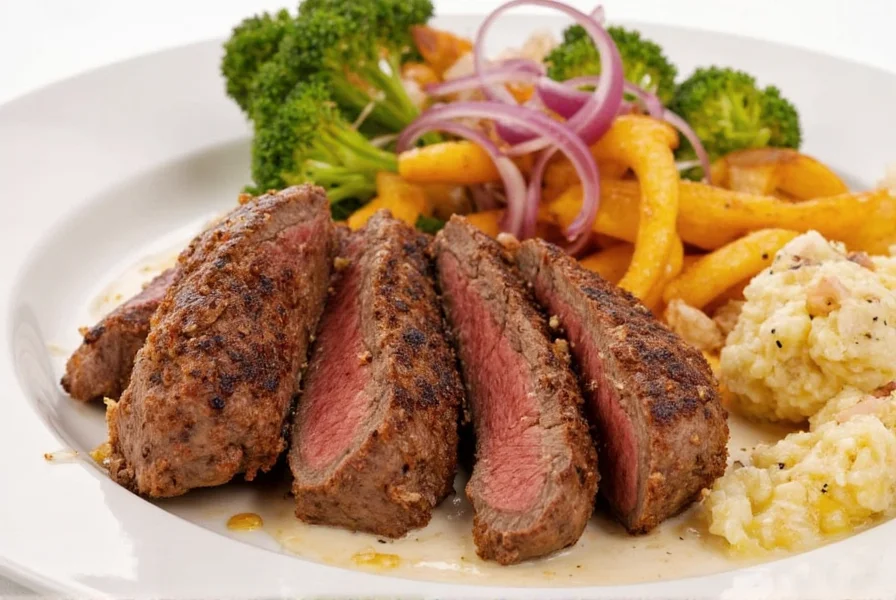What Is Surf and Turf? Step-by-Step Recipe Guide for Perfect Seafood and Steak Combo
Surf and turf is a classic dish combining seafood ("surf") and land-based protein ("turf"), typically steak or lobster. This guide provides a detailed, restaurant-quality recipe for making surf and turf at home, including precise cooking techniques, essential seasoning tips, and common pitfalls to avoid. Whether you're cooking for a special occasion or weeknight dinner, follow these steps for balanced flavors and perfect doneness every time.

Essential Surf and Turf Ingredients and Equipment
Start with high-quality ingredients for the best results. Here's what you'll need:
| Ingredient | Quantity | Why It Matters |
|---|---|---|
| Filet mignon steak | 6-8 oz per serving | Tender cut that cooks evenly without overcooking |
| Lobster tails | 1 per serving | Sweet, delicate flavor that pairs well with beef |
| Coarse black pepper | 1 tbsp | Enhances umami without overpowering seafood |
| Smoked paprika | 1 tsp | Adds subtle smokiness to complement both proteins |
| Garlic powder | 1 tsp | Builds depth without burning like fresh garlic |
| Sea salt | 1 tsp | Essential for bringing out natural flavors |
Step-by-Step Cooking Process
Follow this sequence to prevent overcooking and ensure perfect results:
1. Prep Proteins
- Pat steak and lobster tails dry with paper towels for better searing.
- Mix coarse black pepper, smoked paprika, garlic powder, and sea salt into a dry rub. Apply generously to steak and lobster.
- Let proteins rest at room temperature for 20 minutes before cooking.
2. Cook Steak First
- Heat a cast-iron skillet over medium-high heat with 1 tbsp oil.
- Sear steak for 3-4 minutes per side for medium-rare (internal temp 130-135°F).
- Transfer steak to a warm plate and tent with foil to rest.
3. Cook Lobster Separately
- Reduce skillet heat to medium. Add 1 tbsp butter and minced garlic.
- Place lobster tails in skillet, shell-side down. Cook for 4-5 minutes until opaque and firm.
- Flip and cook 1-2 minutes more for even heating.
4. Rest and Plate
- Let steak rest 5 minutes; lobster rests 2 minutes.
- Plate steak and lobster together. Drizzle with lemon-herb butter sauce for brightness.

Pro Tips for Restaurant-Quality Results
- Temperature control is key: Use a meat thermometer for steak (130-135°F for medium-rare) and ensure lobster reaches 140°F internally to avoid rubbery texture.
- Don't overcrowd the pan: Cook steak and lobster separately to maintain proper searing temperature.
- Balance flavors: Pair with light sides like lemon-dill roasted asparagus or garlic mashed potatoes to cut through richness.
- Sauce smartly: A simple white wine butter sauce (melted butter, white wine, lemon juice, parsley) complements both elements without overwhelming seafood.
| Common Mistake | Why It Happens | How to Fix |
|---|---|---|
| Overcooked seafood | Seafood cooks faster than steak; cooking together causes drying | Always cook seafood separately after steak; use separate pans if needed |
| Flavor imbalance | Using too many strong spices that mask seafood's delicate taste | Apply lighter seasoning to seafood (e.g., lemon pepper only); use bolder rubs for steak |
| Raw or undercooked steak | Skipping thermometer use | Invest in a digital thermometer; check internal temperature before serving |
Spice Storage and Preservation Guide
Proper storage keeps spices fresh for optimal flavor in every dish:
- Airtight containers: Store spices in glass jars with tight lids; avoid original packaging once opened.
- Cool, dark location: Keep away from heat sources like stovetops or ovens; use tinted bottles for light-sensitive spices like paprika.
- Label and date: Write contents and purchase date on containers; replace every 6-12 months for peak freshness.
- Freeze for longevity: For blends with fresh herbs or citrus, freeze in small portions to preserve volatile oils.

Frequently Asked Questions
What exactly is surf and turf?
Surf and turf is a dish combining seafood ("surf") and land-based protein ("turf"), traditionally steak and lobster. Modern variations use shrimp, scallops, or chicken with various meats, but the core is balancing oceanic and terrestrial flavors.
What's the best seafood to pair with steak?
Lobster tails offer the classic sweet, buttery contrast. For budget-friendly options, jumbo shrimp or scallops work well. Avoid oily fish like salmon, which can overpower the steak's richness.
How do I prevent seafood from overcooking?
Always cook seafood separately after steak. Seafood cooks in 4-6 minutes total, while steak takes 8-12 minutes. Use a thermometer: lobster should reach 140°F internally, and steak should be 130-135°F for medium-rare.
What spices work best for both seafood and steak?
Smoked paprika adds subtle depth without overwhelming seafood. Coarse black pepper enhances umami in steak. For seafood, use light lemon pepper; for steak, a simple salt-and-pepper rub preserves natural flavors. Avoid heavy blends like Cajun on lobster.
What sides pair well with surf and turf?
Choose light, acidic sides to balance richness: lemon-roasted asparagus, garlic mashed potatoes, or a crisp arugula salad with vinaigrette. Avoid heavy cream sauces that mask delicate seafood flavors.
Conclusion: Mastering Surf and Turf at Home
Surf and turf combines the best of land and sea when executed with precision. By focusing on proper temperature control, separate cooking techniques, and balanced seasoning, you can create restaurant-quality dishes at home. Remember: quality ingredients, patience, and attention to detail make all the difference. Fire up your grill or skillet, and enjoy a dish that's both impressive and delicious.











 浙公网安备
33010002000092号
浙公网安备
33010002000092号 浙B2-20120091-4
浙B2-20120091-4